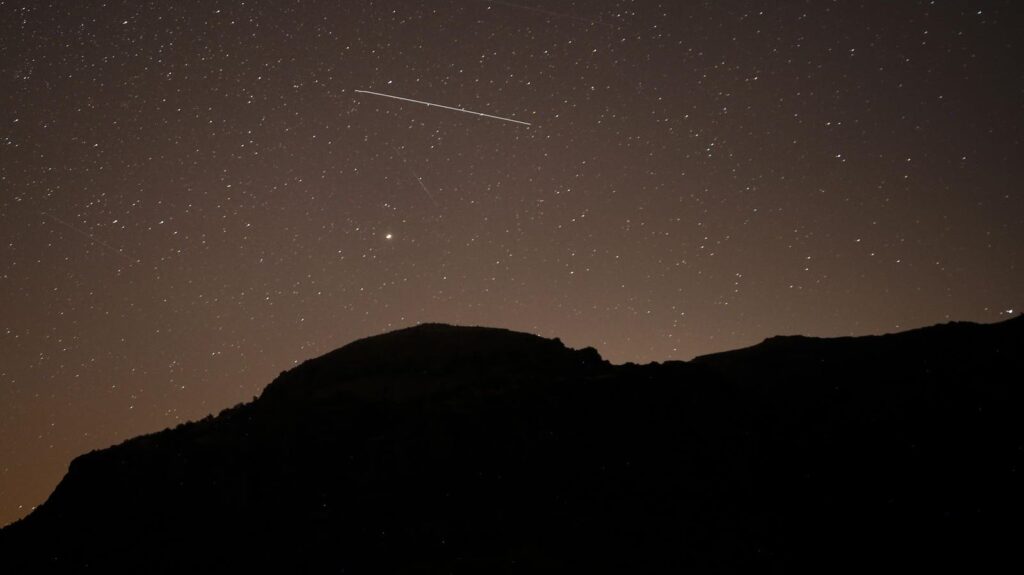Topline
The Leonid meteor shower, which happens each year between November and December, is expected to peak early Saturday morning in bright and colorful streams, according to NASA, which recommends going outside after midnight local time for the most visibility.
ANKARA,TURKEY – NOVEMBER 17: Leonids meteor streaks across the sky over Gudul district of Ankara, … [+]
Anadolu Agency via Getty ImagesKey Facts
The Leonid meteor shower will be visible in the Northern and Southern Hemispheres around midnight local time Saturday, and can even be seen before dawn on Friday, according to the Planetary Society.
Because the moon will be a waxing crescent, the sky should be dark enough to see the meteor shower—NASA says people’s eyes should adjust to spot meteors in the night sky after less than a half-hour outside.
Between 1 and 4 a.m. Saturday morning, much of the Midwest and parts of the Southeastern United States will have clearer skies, but residents of the West and East coasts will have less visibility of the sky due to rain and cloud cover, according to early forecasts by the National Weather Service.
NASA recommends finding an area outside, away from street lamps and other forms of light, and laying down with your feet pointed east to see the meteor shower, which will continue until the sun rises.
The meteors can come at a rate as low as 15 per hour, NASA says, as they dart at a faster-than-usual 44 miles per second.
Key Background
The Leonid meteor shower is visible each year as Earth passes through the debris trail of the 55P/Tempel-Tuttle comet, which is where the Leonids originate from. The comet, which is considered small with its 2.24 mile-long nucleus, takes 33 years to orbit the sun once. While this year’s Leonids are considered a “major shower” by NASA, around every 33 years, an even larger Leonid storm might occur, which is defined by at least 1,000 meteors being visible per hour depending on where a person is watching from. In 1966, Leonid viewers witnessed a meteor storm, and saw thousands of meteors per minute over a 15-minute period. The last Leonid meteor storm happened in 2002, according to NASA.
Surprising Fact
The comet was discovered twice by two independent scientists, according to NASA: Ernst Tempel discovered the comet in 1865, and Horace Tuttle discovered it in 1866.
Further Reading
The Next Big Meteor Shower Could See A Huge ‘Outburst,’ Say Scientists (Forbes)
Watch The Moon Grow As ‘Shooting Stars’ Fall: The Night Sky This Week (Forbes)
